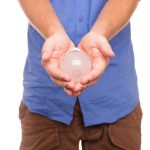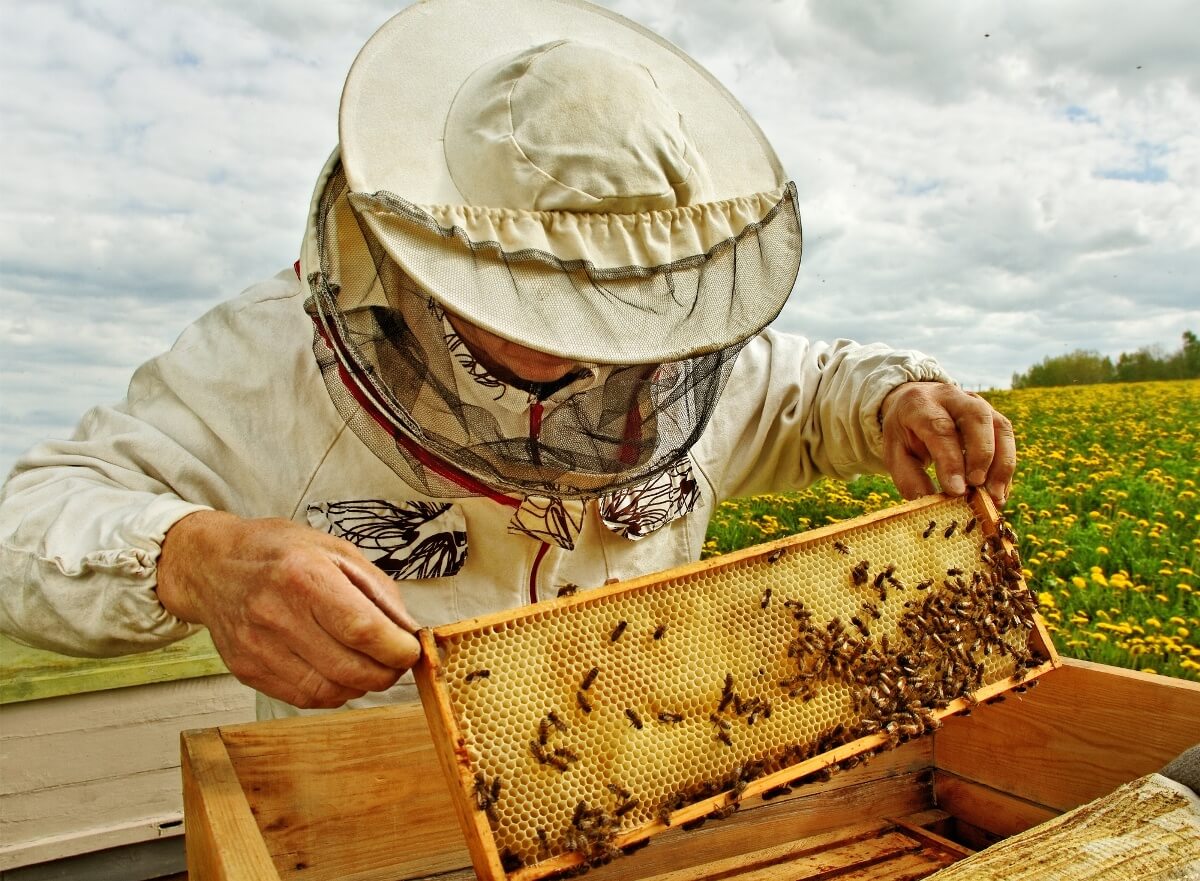Haemoglobin is a kind of protein molecule present in RBCs i.e. red blood cells which carry oxygen from the lungs to different body parts and carbon dioxide back to the lungs so that it can be exhaled. Haemoglobin contains iron which imparts red colour to the blood and helps in maintaining the normal shape of red blood cells. Any kind of abnormality in the structure of haemoglobin can affect the shape of RBCs and disrupts their functions within your body. There are various machines design to measure the quantity of haemoglobin present in the blood but the most common method is the routine complete blood count (CBC) test in which the RBCs are broken to get haemoglobin in a solution. Dangerously low haemoglobin levels may cause death too.
Normal Haemoglobin Values
Haemoglobin level is expressed as the amount of haemoglobin present in grams (g) per decilitre (dL), where a decilitre is equal to 100 millilitres. The normal range of hemoglobin depends upon the age and gender of a person.
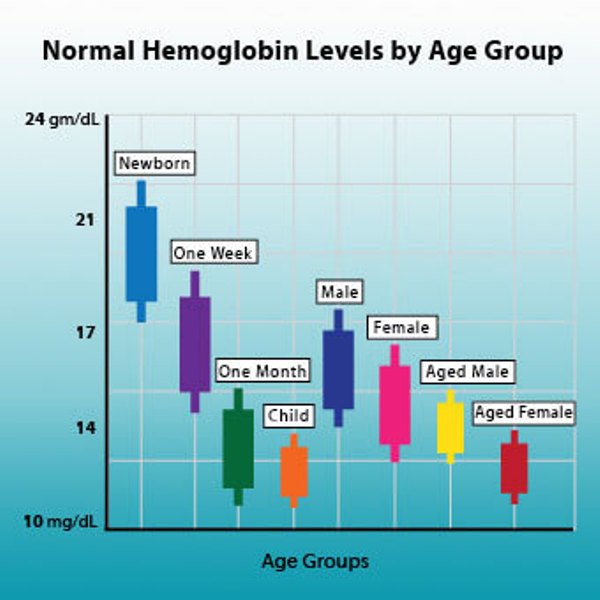
The normal ranges are-
- Newborns: 17 to 22 gm/dL
- One (1) week of age: 15 to 20 gm/dL
- One (1) month of age: 11 to 15 gm/dL
- Children: 11 to 13 gm/dL
- Adult males: 14 to 18 gm/dL
- Adult women: 12 to 16 gm/dL
- Men after middle age: 12.4 to 14.9 gm/dL
- Women after middle age: 11.7 to 13.8 gm/dL
Pregnant women are advised to avoid both the levels of high and low haemoglobin contents to evade risks of stillbirths and premature births.
Low and High Level of Haemoglobin
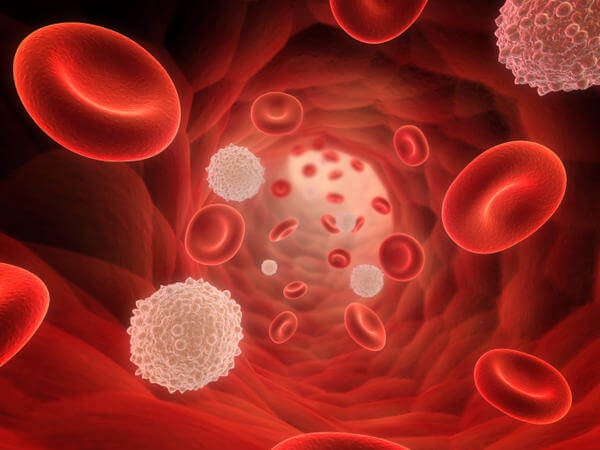
A low-level of haemoglobin or haemoglobin deficiency is referred as anaemia which is caused by the following factors.
1. Excessive loss of blood
2. Deficiency of iron, vitamin B 12 and folate
3. Problems in bone marrow
4. Kidney problems
5. Abnormal haemoglobin structure
Anaemia treatment foods should include foods with high iron. Whereas, a high-level of haemoglobin is mostly caused by dehydration, common in people who smoke or those who live at high altitudes. Other causes may be –
1. Lung disease
2. Tumour
3. Disorder in bone marrow
4. Excessive intake of alcohol
5. Drugs such as Epogen, mostly taken by athletics to increase the production of RBC in the body chemically.
Diseases Caused by Abnormality in Haemoglobin
Sickle Cell Disease
It is a disease in which the normal shape of haemoglobin is affected by genetic conditions, resulting in sickle shape RBCs. In this disease, one defective haemoglobin is inherited from each parent, the impact becomes milder if only one imperfect hemoglobin is inherited from genes of both the parents. The red blood cells cannot pass through blood vessels due to their deformed shape, resulting to inadequate supply of oxygen within the body. In this ailment the amount of RBCs damaged is much greater than the cells produced within a given period of time which leads to anemia. Sickle cell disease includes the following symptoms-
- Body ache
- Chest pain
- Strokes
- Pain in bones
- Decayed growth in children
Thalassemia
Thalassemia is a hereditary condition in which there is a quantitative deficiency of haemoglobin in the body. This condition occurs when globulin, a kind of plasma protein responsible for the synthesis of hemoglobin is not produced in the required amount by the body. Thalassemia is further classified depending on the quantity of globulin deficient and can prove life- threatening in its final stage.
- Poor appetite
- Dark urine
- Abdominal swelling
- Weakness
- Deformities of facial bones
Foods to Increase Haemoglobin
Iron-Rich Foods
Iron deficiency is the most common cause of low levels of haemoglobin. You must take good sources of iron such as red meat, spinach, almonds, dates, cereals, liver etc. to increase quantity of iron in the blood. Foods with high iron can substitute the low levels of haemoglobin. High intake of iron can be harmful for your health as well, therefore you must consult your doctor for right dosage.
Foods Rich in Vitamin C
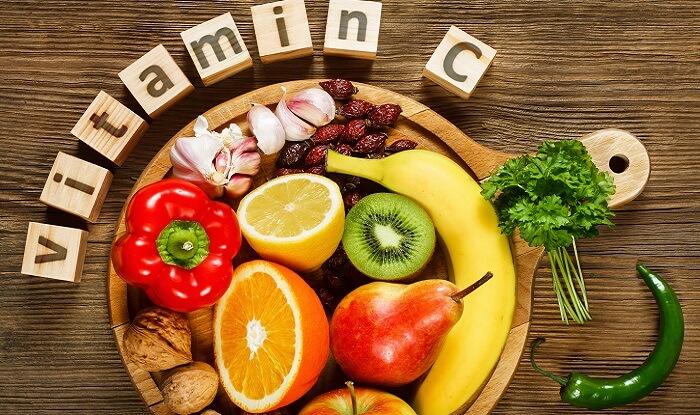
Vitamin C is very important for the absorption of iron in the body. Food items like papaya, orange, lemon, tomatoes, broccoli, grapefruits, strawberries etc can help your body absorb iron normally. Food with high iron when accompanied with Vitamin C is very effective to treat haemoglobin deficiency.
Folic Acids
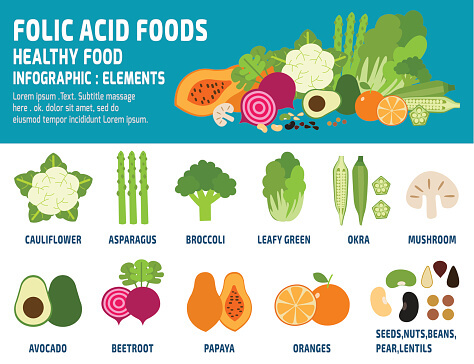
Your body requires folic acid, a form of water soluble B-9 molecule for the formation of haemoglobin. Some good sources of folic acids are green leafy vegetables, liver, rice, sprouts, dried beans, wheat germ, fortified cereals, peanuts, bananas etc.
Beetroots
Rich in iron, folic acid and mineral such as potassium, beetroots are very helpful in increasing the levels of haemoglobin in the blood. They can be taken in the form of healthy juice or you can cook them along with their peels in a microwave. Beet is one of the best foods to increase haemoglobin.
Apples
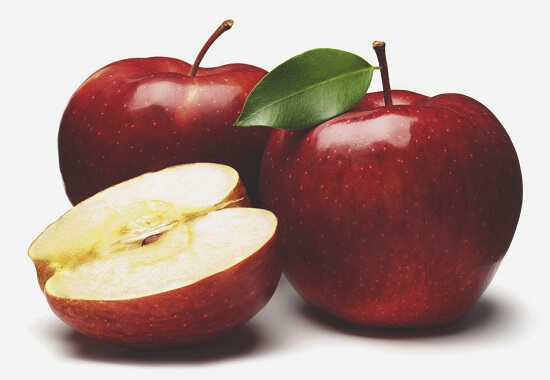
The famous proverb, an apple a day keeps the doctor away reflects the high nutritional value of the fruit. Apples have high content of iron along with other minerals and vitamins which help in maintaining healthy haemoglobin count. What you just need to keep in mind is the fact that it must be eaten along its skin.
Blackstrap Molasses
Blackstrap molasses contains iron, folate and vitamin B which not only help fight anemia, but also boost the production of haemoglobin in your blood. You can make its juice with apple cider vinegar in a cup of water and consume it every day.
Pomegranate
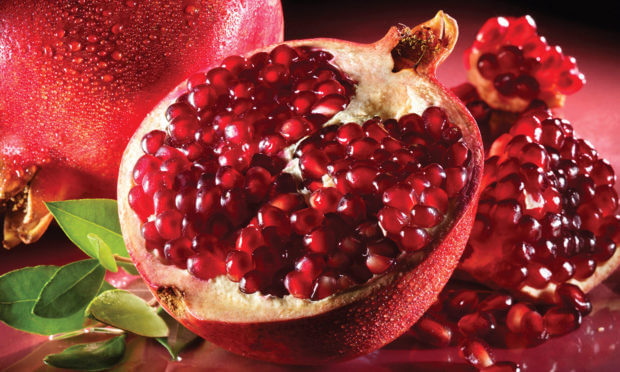
Pomegranate contains iron, calcium, protein, carbohydrates and fiber; these not only increase the hemoglobin level but also ensure healthy blood flow. You can eat a medium sized pomegranate or drink its juice for breakfast. You can also take 2 tablespoons of dried pomegranate seeds with warm milk every day. It’s the best diet for haemoglobin.
Jaggery
Jaggery or gur, common in Indian households is traditionally eaten after the meal. It is a rich source of iron and stimulates the level of haemoglobin. Consuming an inch of jaggery in the morning can yield good results.
Banana
Also known as happy fruit, banana is a fruit known for its ability to combat mood swings. It is also a good source of potassium and iron and facilitates the normal haemoglobin count. You can eat it just after you had a meal or when you have not eaten anything at all as body absorbs iron easily.
Nettle
Nettle is an herb which is a rich source of iron, vitamin B and vitamin C and plays a key role in raising haemoglobin levels safely. You can have it by following this procedure-
1. Add 2 teaspoons of dried nettle leaves to a cup of hot water.
2. Allow it to steep for 10 minutes.
3. Strain, and then add a little honey.
4. Drink this twice daily.
Additional Methods
Avoid Iron blockers
If you have low-level of haemoglobin in your blood, you must avoid foods that block the tendency of the body to absorb iron. Some of this are-
1. Coffee
2. Tea
3. Colas
4. Wine
5. Beer
Exercise Daily
When you exercise, your body produces more haemoglobin to meet the demand of oxygen required so, you must exercise. Aerobic exercises are highly recommended. Some special training to increase muscle mass and fight fatigue can also be included.
Some other tips
1. Avoid foods containing gluten.
2. Eat whole-grain breads, cereals and pastas.
3. Consume more iron-rich food after your menstrual period and during pregnancy.
4. Avoid taking over-the-counter stimulants if your energy levels are low.
5. Take cold baths twice daily to improve blood circulation.

